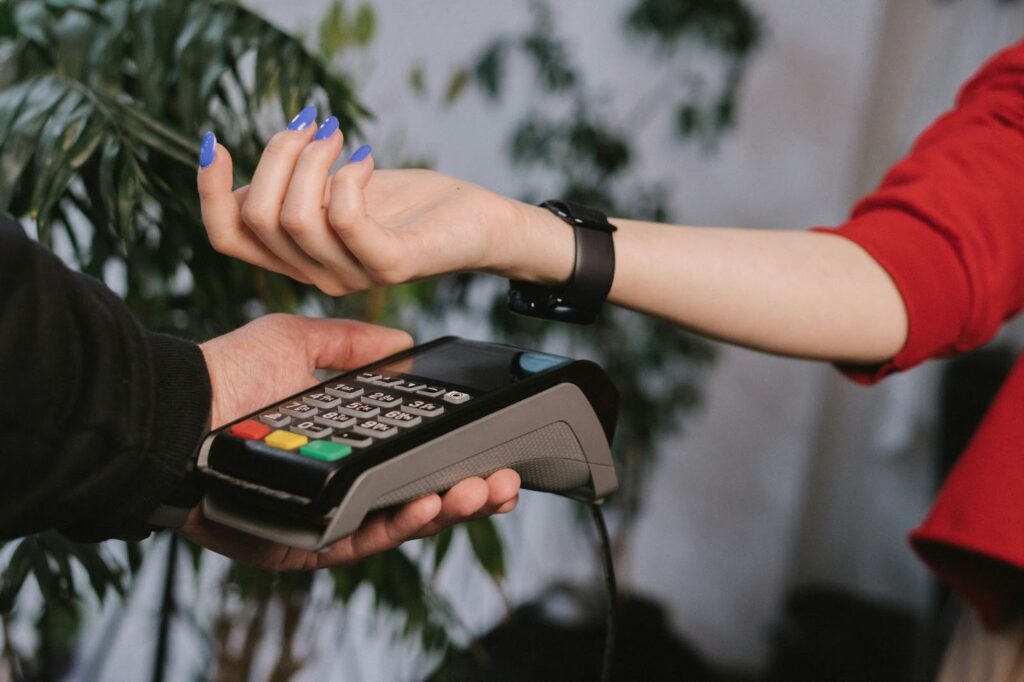When it comes to modern finance, convenience and security are paramount. One of the most significant advancements in this domain is the rise of contactless payments. These transactions have transformed the way we pay for goods and services. This article delves into the technology behind contactless payments, their benefits, and their increasing popularity.
What Are Contactless Payments?
Contactless payments use near-field communication (NFC) technology to enable secure transactions between a payment device (such as a smartphone or contactless card) and a payment terminal. Instead of swiping or inserting a card, users simply hold their device near the terminal to complete the payment. This technology is embedded in various devices, including credit and debit cards, smartphones, smartwatches, and even key fobs.
How Contactless Payments Work
Contactless payment technology relies on two key components: the payment device and the payment terminal. When a user initiates a transaction, the NFC chip in the payment device communicates with the terminal through radio waves. This exchange of information allows the terminal to verify the payment details and complete the transaction within seconds.
Here’s a simple breakdown of the process:
- Initiation: The user holds their NFC-enabled device close to the payment terminal.
- Authentication: The terminal sends a signal to the device, requesting payment information.
- Verification: The device sends encrypted payment data to the terminal.
- Completion: The terminal processes the data and confirms the payment.
Benefits of Contactless Payments
Contactless payments offer numerous advantages, both for consumers and businesses. Below are some of the key benefits:
For Consumers:
- Speed and Convenience: Transactions are faster and more efficient, reducing wait times at checkout.
- Security: Contactless payments use encryption and tokenization to protect sensitive information.
- Hygiene: Eliminating the need to touch shared surfaces is especially beneficial in the context of public health.
For Businesses:
- Increased Efficiency: Faster transactions can lead to shorter lines and improved customer satisfaction.
- Reduced Operational Costs: Fewer cash transactions mean lower handling and processing costs.
- Enhanced Customer Experience: Offering modern payment options can attract tech-savvy customers.
Adoption and Popularity
The adoption of contactless payments has been growing steadily, driven by both consumer demand and technological advancements. The COVID-19 pandemic further accelerated this trend, as people sought out safer and more hygienic ways to pay.
| Year | Percentage of Transactions Contactless (%) | Regions with Highest Adoption |
| 2019 | 35 | Europe, Asia-Pacific |
| 2020 | 45 | Europe, North America |
| 2021 | 55 | Europe, Asia-Pacific |
| 2022 | 65 | Europe, North America |
| 2023 | 75 | Europe, Asia-Pacific |
Global Adoption of Contactless Payments (2019-2023)
Major Players in the Market
Several companies are leading the charge in the contactless payments market, each bringing unique strengths to the table. Visa, for instance, has long been a pioneer in this technology, offering secure and efficient transactions that have gained widespread trust and acceptance.
Mastercard, another heavyweight in the industry, is known for its extensive global network and advanced security features, making it the preferred choice for millions of users around the world, while all gamblers choose online casino paysafecard.
Apple Pay leverages the immense popularity of Apple devices, seamlessly integrating with iPhones, iPads, and Apple Watches to provide a smooth and user-friendly payment experience. Google Pay caters to the vast Android user base, offering an accessible and intuitive platform that simplifies the payment process.
Meanwhile, Samsung Pay stands out with its unique Magnetic Secure Transmission (MST) technology, which ensures broader compatibility with a wide range of payment terminals, enhancing its appeal in the market.
Together, these major players are driving the rapid adoption and evolution of contactless payment solutions, shaping the future of how we transact. Notably, Apple Pay, Google Pay, and Samsung Pay also make it easier to pay for things online.
Challenges and Considerations
Despite the numerous benefits of contactless payments, there are several challenges and considerations that need to be addressed. Security concerns remain a significant issue, as with any digital transaction. While contactless payments are generally secure, the risk of data breaches and fraud cannot be entirely eliminated, necessitating ongoing advancements in security measures.
Another challenge lies in the infrastructure required to support contactless payments. Not all retailers have upgraded to terminals that can handle contactless transactions, which can limit the availability and convenience of this payment method. This gap in infrastructure can slow down the widespread adoption of contactless payments, particularly in regions with older or less advanced payment systems.
Consumer awareness and acceptance also play a crucial role. Some consumers are still unaware of how contactless payments work or may be hesitant to use them due to concerns about security or unfamiliarity with the technology. Educating consumers about the benefits and safety of contactless payments is essential to increase their comfort and willingness to adopt this method.
Overall, while contactless payments offer many advantages, addressing these challenges is vital to ensuring their successful and widespread implementation.
Conclusions
Contactless payments represent a significant step forward in the evolution of financial transactions. With their speed, convenience, and security, they are poised to become the preferred payment method. Whether you’re a consumer looking for a faster way to pay or a business aiming to improve customer satisfaction, embracing contactless payments is a smart move for the future.

